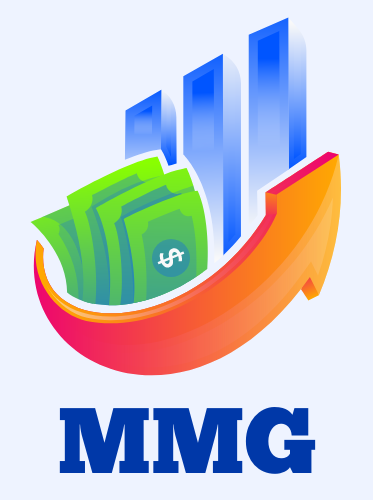Blogging vs. Vlogging has become a focal point of discussion in today’s digital age. While some gravitate towards the written narratives on blogs, others are captivated by the visual tales told through vlogs on platforms like YouTube. These two mediums have revolutionized the way we share and consume information online. In this piece, we’ll explore the origins, benefits, and potential downsides of blogging and vlogging. Join us on this exploration!
The internet gave everyone a chance to share their stories. With blogs, people can write and share their ideas quickly. Later, as the internet got faster, videos became popular. This led to vlogging. Both blogs and vlogs let people connect, learn, and have fun. But which is better? Is reading a blog more fun than watching a video? Or is it the other way around? And if you want to start your blog or vlog, which one should you choose? To find answers, we’ll take a closer look at both.
So, come with us as we explore the world of blogs and vlogs. Whether you love reading, watching, or making content, this article will help you understand these two popular ways of sharing online.
Blogging: The Dawn of Digital Diaries
Blogging, essentially, began as the digital evolution of personal diaries. In the late 1990s, with the advent of platforms like LiveJournal and Blogger, people found an avenue to share their personal stories, expertise, and passions with a global audience. Over time, these blogs evolved from personal journals to information hubs, industry insights, and more.

Blogging: Pros and Cons
Pros
- Searchability: Blogs can be easily found by search engines. This is because they are text-based. So, a well-written blog can appear at the top of search results if someone is looking for certain information.
- Depth: Blogs let writers dive deep into topics. This means readers can get a lot of details, facts, and information on a subject.
- Pacing: The best thing about reading is that you can go at your own speed. You can quickly skim through a blog or take your time and read every word.
- Cost-effective: Starting a blog doesn’t cost much. Mainly, you’d spend on buying a website name (domain) and a place to keep the website running (hosting).
Cons
- Writing prowess: To make a blog interesting, write well. Good writing grabs the reader’s attention and shares ideas.
- Time-intensive: Writing a good blog takes time. It’s not just about writing; it’s also about researching and ensuring all the information is correct.
- Engagement challenge: Just text can sometimes be boring. People might lose interest and stop reading if a blog doesn’t have pictures, videos, or other fun stuff.
Vlogging: From Text to Screen
Around the mid-2000s, as the internet’s bandwidth grew and platforms like YouTube emerged, a new form of expression took root: vlogging. Instead of writing their stories, individuals began narrating them, capturing moments in videos, creating tutorials, or simply sharing their daily lives. The allure of video made content consumption more engaging, lively, and personal.

Vlogging: Pros and Cons
Pros
- Audience Engagement: Videos can catch people’s attention better than just text. They use both sight and sound, so viewers are likelier to stay and watch.
- Personality Showcase: Through vlogs, creators can show their true selves. This makes viewers feel like they know the person they’re watching, creating a closer connection.
- Viral Potential: If a vlog is fun or exciting, people will share it. This means it can spread quickly and be seen by many more people.
- Monetization: Making money from vlogs is easier on platforms like YouTube. They have ways to pay creators, especially when video ads are shown.
Cons
- Equipment: To make a good vlog, you need the right tools. This means spending money on cameras, microphones, and other things.
- Editing: Once you record a vlog, you must assemble it. Editing videos can be hard and take time, especially if you’re new to it.
- Algorithm Dependency: Sometimes, even if a vlog is excellent, it might not get many views. Places like YouTube use special rules (algorithms) to decide what videos to show people. These rules can change and be hard to understand.
- On-Camera Requirement: Being in front of a camera can be challenging. You have to look and act in a way that people will like. Not everyone is comfortable or good at this.
5. Audience Preferences
People have different tastes. What one person likes, another might not. This is true for both vlogs and blogs.

Visual vs. Text:
Some folks love watching vlogs because they feel real and alive. Seeing someone talk, their expressions, and their surroundings can make a story more relatable. On the other hand, some love reading blogs. They enjoy taking their time, imagining things, and diving deep into details.
Age Matters:
Different age groups might have different preferences. For example, a young person might enjoy short and snappy vlogs on TikTok or YouTube. They often want quick entertainment or information. But an older person or a researcher might want detailed blogs. They look for depth, facts, and a chance to think deeply about a topic.
Culture and Background:
Where you come from can also shape what you like. In some cultures, storytelling is a big thing. People from such places might love vlogs where they can hear and see stories unfold. In contrast, blogs might be more popular in places where reading is highly valued.
Learning and Remembering:
How we learn and remember things can also depend on the format. Videos with excellent graphics, animations, and sound effects can help explain tough ideas. They can make hard topics fun and easy to grasp. On the other hand, reading a well-written blog can help some people understand and remember details better.
Ultimately, whether it’s a vlog or a blog, the goal is to share ideas, stories, and information. And with so many choices out there, there’s something for everyone!
6. Technical Considerations
Both blogging and vlogging come with their own technical needs. It’s important to know and plan for these so your content looks good and reaches as many people as possible.
Blogging:
Domain & Hosting:
It’s good to have your website name (called a domain). It makes your blog look more professional. While places like WordPress give free spaces for blogs, it’s better to have a name like “MyAwesomeBlog.com” instead of “MyAwesomeBlog.wordpress.com”.

Platform Selection:
There are a lot of places where you can start a blog. WordPress is popular, but others like Wix, Squarespace, and Medium are good. Choose the one that you find easiest and best for your needs.
Design:
Many people use their phones to read things online. So, make sure your blog looks good on both computers and mobiles.
Vlogging:
Equipment:
Good videos need good tools. Spend money on a clear camera and a microphone that captures sound well.
Editing Software:
After filming, you’ll need to put your video together. Software like Adobe Premiere Pro or Final Cut Pro can help you do this. They can be a bit hard at first, but you’ll get better with practice.

Platforms:
YouTube is where most vloggers post their videos. But there’s also Vimeo, TikTok, and others. Pick the one that fits your style and where your audience likes to watch.
Always think about your audience. Not everyone hears or sees in the same way. So, for vlogs, add subtitles or words at the bottom. This way, more people can understand and enjoy your content.
7. Monetization Opportunities
The internet provides a treasure trove of ways to make money for content creators, whether blogging or vlogging. Each medium, however, comes with its methods and nuances. Let’s explain how both can be monetized and how subscriber counts might factor into the equation.
Blogging
Affiliate Marketing:
Bloggers can link to products or services in their articles. If a reader purchases via this link, the blogger gets a commission. Amazon’s affiliate program is a popular choice for many.

Sponsored Posts:
Companies might pay bloggers to cover their products or services. These articles need to be clearly marked as sponsored for transparency.
Ad Revenues:
Ads can appear within articles, on sidebars, or even as pop-ups. Google AdSense is a popular tool that places ads on blogs. Bloggers earn based on the ad’s views or clicks. While blogs have no strict “subscriber” count, more regular readers or site visitors can boost potential earnings.
Vlogging:
Video Ads:
Ads can appear before, during, or after videos. Every time an ad is viewed, the vlogger earns.
Sponsored Content:
Vloggers might get paid to showcase or review a product. Transparency is crucial, so viewers should be informed if content is sponsored.

Viewer Donations:
Platforms like Twitch or Patreon allow fans to donate directly.
Channel Memberships:
Once a vlogger reaches 1,000 subscribers, they can enable channel memberships on YouTube. Viewers can subscribe and pay a monthly fee for perks.
Monetizing via YouTube Partner Program (YPP):
To get into YouTube’s monetization program, a vlogger needs at least 1,000 subscribers and 4,000 watch hours over the past 12 months. Once these thresholds are met, video ads, super chat, and other monetization methods are available.
Your earnings will depend on several factors, like the content topic, the number of viewers, and engagement level. It’s also crucial to maintain trust by disclosing sponsored content.
While blogging and vlogging both present viable ways to earn, the potential income and requirements can differ. Both avenues demand dedication, authenticity, and a keen understanding of one’s audience
8. The Future: Integrating Both Mediums
The digital world is constantly changing, and smart content creators are adapting to these changes. One big trend is the merging of blogging and vlogging.
Why Combine Both?
Some people love to read; others love to watch. By mixing videos with written content, creators can make everyone happy. For example, a blog post about a trip can have embedded videos showing the places visited. Or a cooking vlog can have a written recipe below the video. This way, viewers can choose what they like best.
Benefits of an Integrated Approach
- Maximized Reach: By offering reading and watching options, creators can attract more people to their content.
- Flexibility: Sometimes, explaining things in writing is easier; other times, a video can be more effective. Using both means the message is always clear.
- SEO Advantage: Search engines like Google love websites with diverse content. A site with text, videos, images, and other media can rank higher in search results.
- Accessibility: Videos can be great, but not everyone can watch or hear them. Having written content ensures that even people with disabilities can access the information.
Adapting to Audience Needs:
Different age groups, cultures, and communities might have different preferences. A teenager might like a quick vlog, while a professional might want a detailed article. By integrating both mediums, creators can ensure they cater to everyone’s needs.
9. Conclusion
Choosing between blogging and vlogging isn’t a one-size-fits-all answer. It depends on what you’re good at, your audience likes, and what you hope to achieve. Blogs are great for deep dives into topics, whereas vlogs give viewers a face and voice to connect with. But remember, the digital world is constantly changing. To stay ahead, creators should be flexible, maybe even blending writing and video. The key is to know your strengths, listen to your audience, and always be ready to evolve. Whatever the choice, genuine passion, and consistency will always be the cornerstone of impactful content.
FAQs (Frequently Asked Questions) on “Blogging vs. Vlogging”
What are the main differences between blogging and vlogging?
Blogging primarily uses written content and images, while vlogging relies on video. Each has its unique presentation style, audience engagement, and technical requirements.
Is it easier to start a blog or a vlog for beginners?
Starting a blog typically requires less initial investment in equipment and can be easier for those comfortable with writing. However, vlogging might be more appealing for naturally expressive people who prefer to communicate verbally and visually.
Which platform is best for blogging? And for vlogging?
Popular platforms for blogging include WordPress, Blogger, and Medium. YouTube is the most popular for vlogging, followed by platforms like Vimeo and Dailymotion.
How do bloggers and vloggers make money?
Both bloggers and vloggers can earn through ad revenue, affiliate marketing, sponsored content, merchandise, and more. The specifics might vary based on the platform and audience size.
Can I do both blogging and vlogging simultaneously?
Absolutely! Many content creators maintain blogs and vlogs to cater to diverse audience preferences and maximize reach.
How much does it cost to start a blog or vlog?
Starting a primary blog can be relatively inexpensive, with costs associated with domain registration and hosting. Vlogging often requires a more significant upfront investment in equipment like cameras, microphones, and editing software.
Do I need professional training to start a blog or vlog?
No, many successful bloggers and vloggers are self-taught. However, courses and tutorials can provide valuable insights and shortcuts.
How long does it typically take to gain a significant audience?
This can vary widely based on content quality, niche, promotion strategies, and consistency. Some creators gain traction in a few months, while others might take years.
Are there any age restrictions for bloggers or vloggers?
Most blogging platforms do not have age restrictions. However, platforms like YouTube have terms of service that may require users to be above a certain age or have parental consent.
Which medium is more future-proof: blogging or vlogging?
Predicting the future of digital content is challenging, but both mediums have proven resilient and adaptable. The best approach is to stay flexible and evolve with audience preferences and technological advancements.
